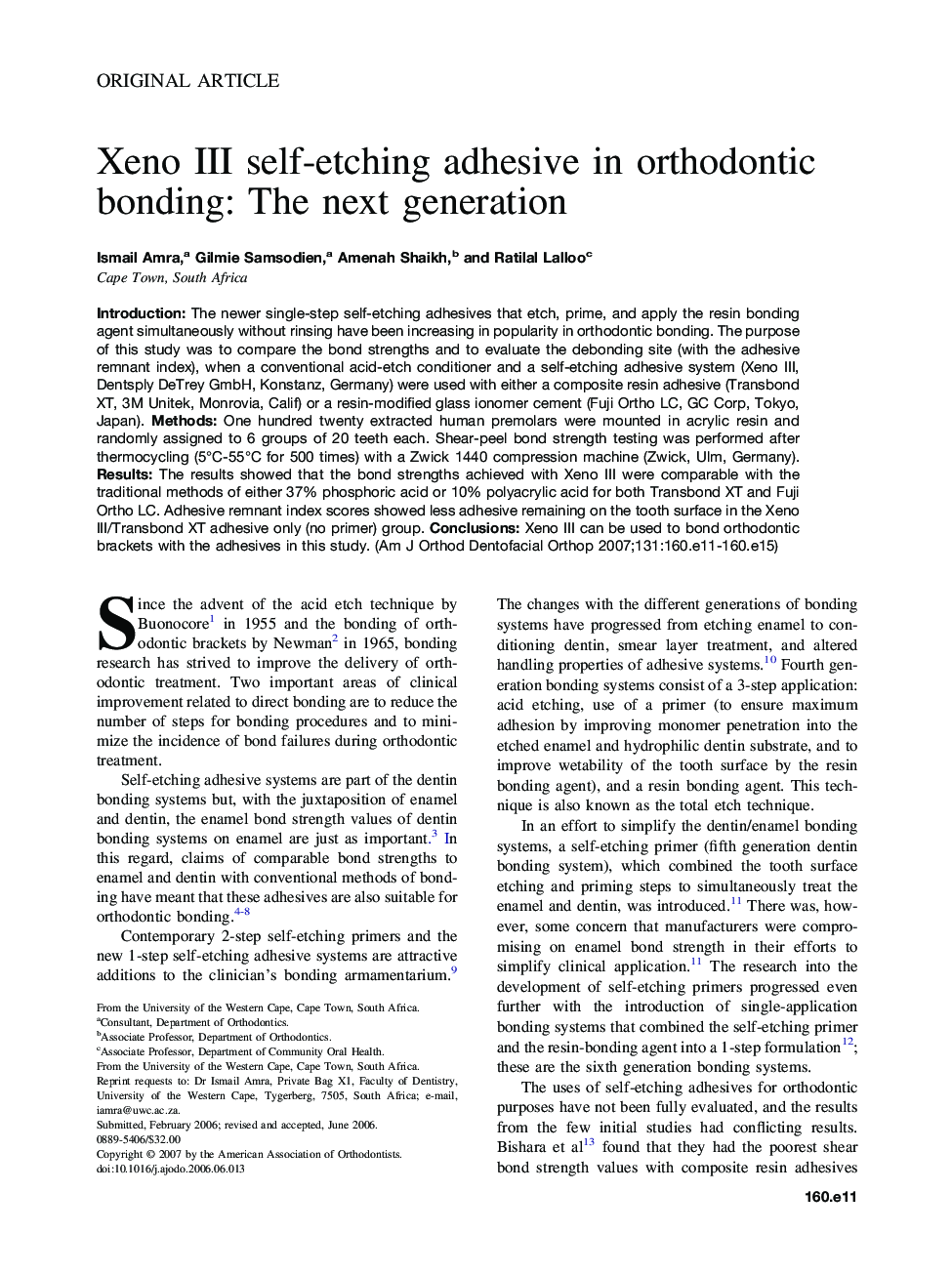| Article ID | Journal | Published Year | Pages | File Type |
|---|---|---|---|---|
| 3119293 | American Journal of Orthodontics and Dentofacial Orthopedics | 2007 | 5 Pages |
Abstract
Introduction: The newer single-step self-etching adhesives that etch, prime, and apply the resin bonding agent simultaneously without rinsing have been increasing in popularity in orthodontic bonding. The purpose of this study was to compare the bond strengths and to evaluate the debonding site (with the adhesive remnant index), when a conventional acid-etch conditioner and a self-etching adhesive system (Xeno III, Dentsply DeTrey GmbH, Konstanz, Germany) were used with either a composite resin adhesive (Transbond XT, 3M Unitek, Monrovia, Calif) or a resin-modified glass ionomer cement (Fuji Ortho LC, GC Corp, Tokyo, Japan). Methods: One hundred twenty extracted human premolars were mounted in acrylic resin and randomly assigned to 6 groups of 20 teeth each. Shear-peel bond strength testing was performed after thermocycling (5°C-55°C for 500 times) with a Zwick 1440 compression machine (Zwick, Ulm, Germany). Results: The results showed that the bond strengths achieved with Xeno III were comparable with the traditional methods of either 37% phosphoric acid or 10% polyacrylic acid for both Transbond XT and Fuji Ortho LC. Adhesive remnant index scores showed less adhesive remaining on the tooth surface in the Xeno III/Transbond XT adhesive only (no primer) group. Conclusions: Xeno III can be used to bond orthodontic brackets with the adhesives in this study.
Related Topics
Health Sciences
Medicine and Dentistry
Dentistry, Oral Surgery and Medicine
Authors
Ismail Amra, Gilmie Samsodien, Amenah Shaikh, Ratilal Lalloo,
